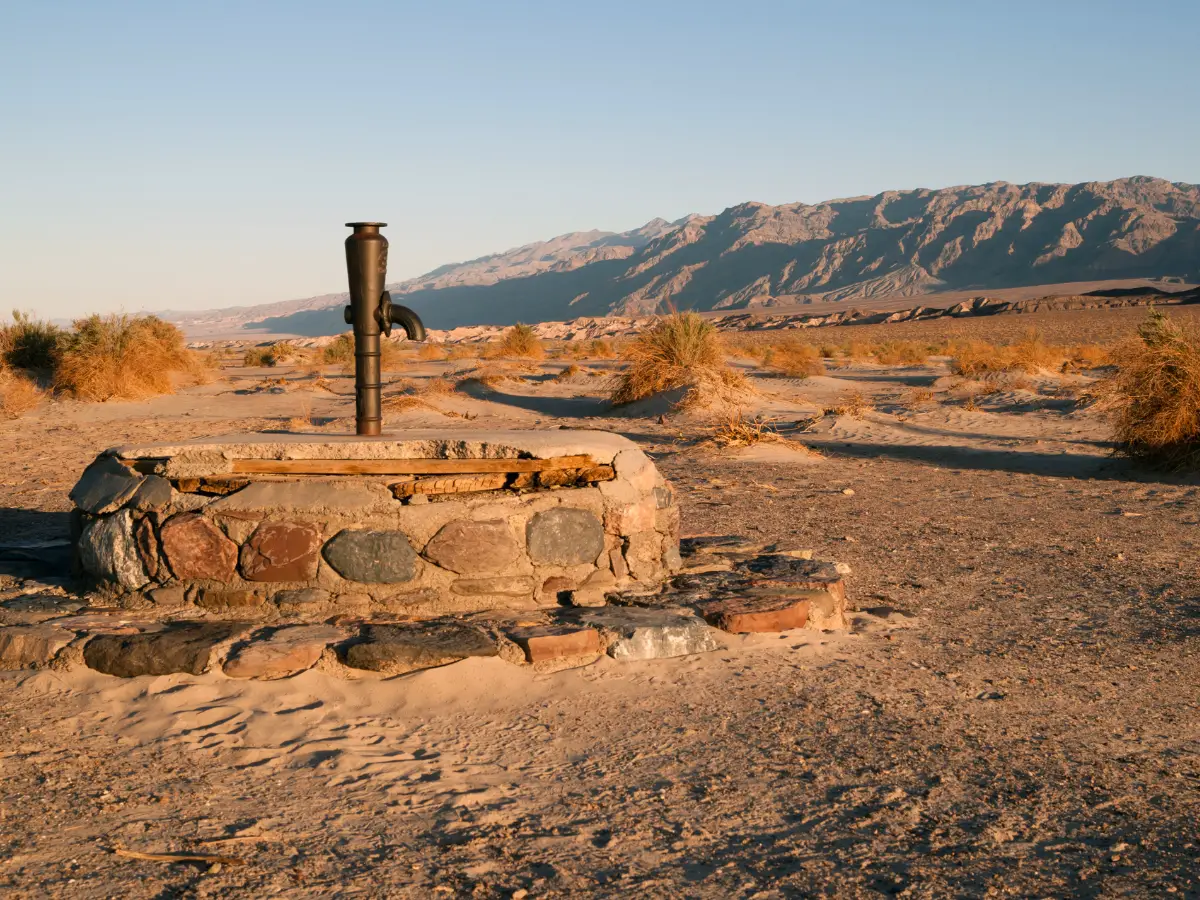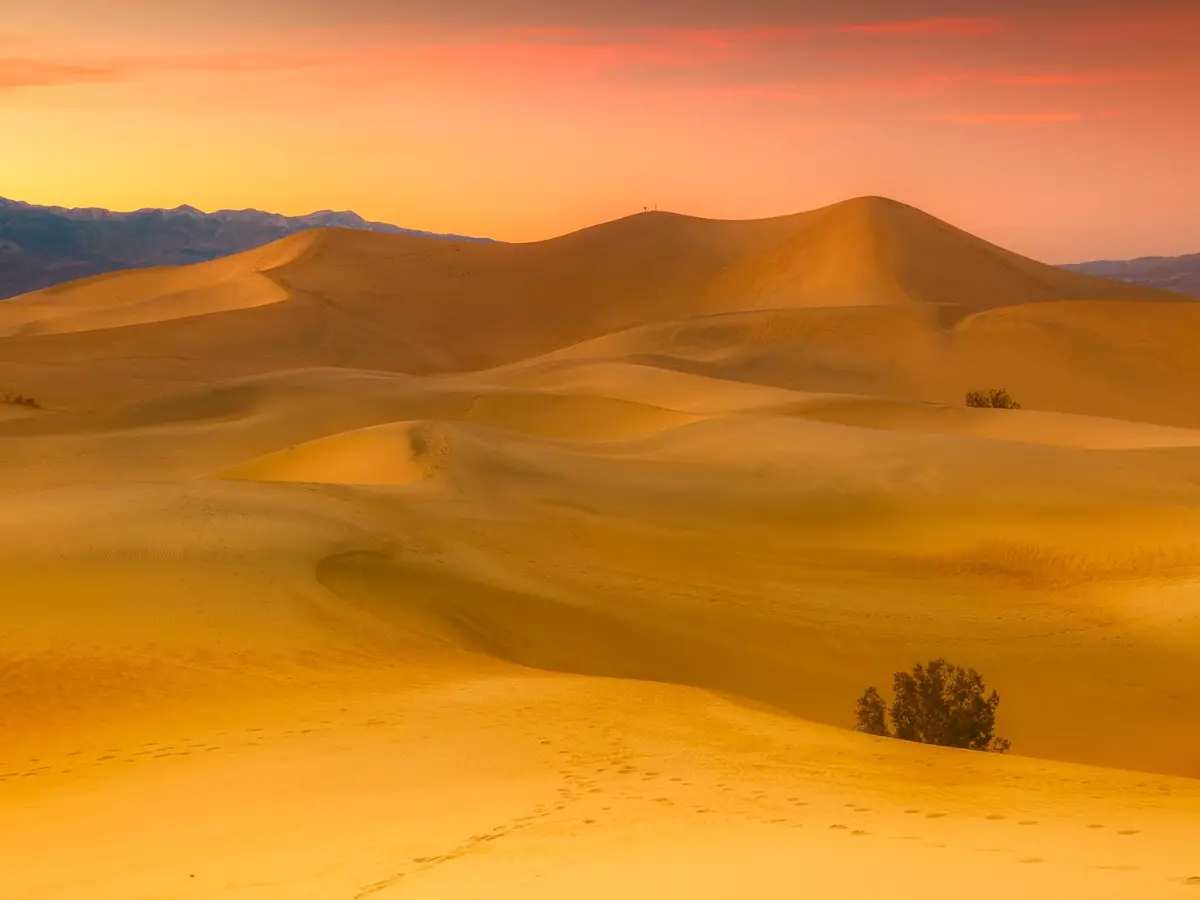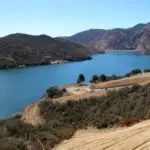California is no stranger to droughts, but the recent dry spell has been particularly severe. The state has been experiencing a deficit for the last two years, exacerbated by the hot weather. California is known for its dry climate, but the current drought has been caused by a combination of factors, including climate change, lack of precipitation, and increased demand for water.
One of the main reasons why California is so dry is the state’s dependence on just a few big storms a year. The state’s water supply mainly depends on winter precipitation, which is then stored in reservoirs throughout the year. However, in recent years, these big storms have become less frequent, leading to a water shortage. This has been further compounded by the hot weather, which has caused snow to melt faster, reducing the amount of water stored in the state’s reservoirs.
Another factor contributing to California’s dry spell is climate change. Human-induced climate change has caused temperatures to rise, which has led to more frequent and severe droughts. The state has experienced record-breaking heatwaves in recent years, exacerbating the drought conditions. Additionally, climate change has altered precipitation patterns, leading to less snowfall in the mountains, a crucial water source for the state.

California’s Unique Geography
California’s geography is a major factor in the state’s dry climate. The state’s location on the west coast of the United States, along with its unique topography, creates a variety of microclimates and weather patterns.
Impact of Mountains
The Sierra Nevada mountain range runs along the eastern edge of California, creating a rain shadow effect that makes the western side of the range much drier than the eastern side. This means that areas like the Central Valley and the coastal regions receive much less precipitation than areas like the Sierra Nevada and the northern parts of the state.
Role of Coastal and Inland Regions
The coastal regions of California, including major cities like San Francisco, Los Angeles, and San Diego, have a Mediterranean climate, characterized by mild, wet winters and dry summers. Inland regions, like the Central Valley and the deserts of Southern California, have a much drier climate, with hot summers and little rainfall.
Significance of Central Valley
The Central Valley, which runs through the middle of California, is a major agricultural region and home to many of the state’s largest cities, including Sacramento and Fresno. Mountains surround the valley on three sides, which trap hot, dry air and prevent moisture from reaching the region. This, combined with the region’s high temperatures and lack of rainfall, makes it one of the driest areas in the state.
Overall, California’s unique geography plays a significant role in the state’s dry climate. The mountains, coastal and inland regions, and Central Valley all contribute to the state’s complex weather patterns and varying levels of precipitation.

Climate Characteristics of California
Winter and Summer Patterns
California’s climate is diverse due to its size, topography, and proximity to the Pacific Ocean. The state experiences a Mediterranean climate characterized by mild, wet winters and hot, dry summers. The temperature gradient between the immediate coast and low-lying inland valleys in the south is about 7 °F (4 °C) in winter, with the coast being warmer. In summer, the gradient is roughly 20 °F (11 °C), with the interior being warmer.
During the winter months, California receives most of its precipitation, primarily from the westerly winds that bring moisture from the Pacific Ocean. The northern part of the state typically receives more rainfall than the south. In January, the state’s wettest month, the Sierra Nevada Mountains receive most of their snowfall, which is essential for the state’s water supply.
In contrast, summer in California is hot and dry, with little to no rainfall. The dryness of the air and the consequent rapidity of evaporation greatly lessen the severity of summer heat, except on the coast.
Role of Mediterranean Climate
California’s Mediterranean climate is a result of its location between 30 and 40 degrees latitude, where the westerly winds from the Pacific Ocean bring in cool, moist air. The state’s climate is also influenced by the North Pacific High, a high-pressure system that typically sits off the coast during the summer months, preventing the intrusion of moist air from the ocean.
The Mediterranean climate of California is unique in that it is the only region in the world where it occurs on the west coast of a continent. This climate provides the state with a long growing season, which is ideal for agriculture.
Impact of La Niña and El Niño
The weather phenomenon known as El Niño and La Niña can have a significant impact on California’s climate. El Niño occurs when the surface waters of the Pacific Ocean become warmer than usual, while La Niña occurs when they become cooler than usual.
During El Niño years, California typically experiences above-average rainfall, which can lead to flooding and landslides. In contrast, during La Niña years, California experiences below-average rainfall, which can exacerbate drought conditions.
In recent years, warming temperatures and changing weather patterns have caused longer and more severe droughts in California. The state’s water supply is heavily reliant on snowpack in the Sierra Nevada Mountains, which has been decreasing due to warmer temperatures.
Overall, California’s climate is complex and influenced by various factors, including its location, topography, and proximity to the Pacific Ocean. Understanding these factors is essential for predicting and managing the state’s water supply and agriculture.

Water Resources in California
California’s water resources are a complex system that includes surface water, groundwater, and snowpack. The state’s water supply is affected by a variety of factors such as annual rainfall, soil moisture, runoff, and pumping. In this section, we will explore the state of reservoirs and lakes, snowpack and its role, aquifers and groundwater, and surface water availability.
State of Reservoirs and Lakes
Reservoirs and lakes are a critical source of water for California. As of 2022, the state’s reservoirs are at 50% of their total capacity. The low levels are due to the ongoing drought, which has reduced the amount of water flowing into the reservoirs. The water supplies are also affected by the snowpack, which has been below average in recent years.
Snowpack and its Role
The Sierra Nevada snowpack is a vital source of water for California. It acts as a natural reservoir, slowly releasing water into streams and rivers throughout the year. The snowpack provides about one-third of the state’s water supply. However, in recent years, the snowpack has been below average due to the ongoing drought. This has put additional pressure on the state’s water supplies.
Aquifers and Groundwater
Groundwater and aquifers are an essential source of water for California. They provide about 40% of the state’s water supply. However, over-pumping of groundwater has led to a decline in the water table and subsidence in some areas. This has led to concerns about the long-term sustainability of groundwater resources.
Surface Water Availability
Surface water is another critical source of water for California. It includes streams, rivers, and other bodies of water. The availability of surface water is affected by annual rainfall, snowpack, and runoff. The state’s water supplier, the California State Water Project, delivers water from the Sacramento-San Joaquin Delta to farmers and other water users in the state. However, the ongoing drought has reduced the amount of water available for delivery, leading to water shortages for farmers and other users.
In conclusion, California’s water resources are under stress due to the ongoing drought and other factors. The state must continue to implement water conservation measures and invest in infrastructure to ensure a reliable water supply for the future.
California’s Drought History and Current Situation
Historical Drought Events
California has a long history of droughts, with the most severe events occurring in the past century. The most notable droughts in California’s history include the 1928-1934, 1976-1977, and 2012-2016 droughts. These droughts were characterized by prolonged dry periods, low precipitation, and high temperatures, which led to water shortages, crop failures, and wildfires.
The 1928-1934 drought was one of the most severe droughts in California’s history, with some regions experiencing no rainfall for more than two years. The drought led to the migration of thousands of people from the affected areas and had a significant impact on the state’s agriculture industry.
The 1976-1977 drought was another significant event that lasted for two years and caused widespread water shortages. This drought led to the implementation of water conservation measures, such as mandatory water rationing and restrictions on outdoor water use.
The 2022 Drought Situation
California is currently experiencing a severe drought, with more than 90% of the state classified as abnormally dry or in drought conditions according to the U.S. Drought Monitor. The drought has been caused by a combination of factors, including low precipitation, over-pumping of groundwater, and high temperatures.
The effects of the drought have been felt across the state, with water shortages, crop failures, and wildfires. The situation has led to the implementation of water conservation measures, such as mandatory water restrictions and reductions in agricultural water use.
Despite recent rain and snowfall, the drought is far from over, and California will need sustained precipitation over several years to fully recover from the current dry spell. The state is taking steps to address the issue, such as investing in water infrastructure and promoting water conservation measures.
Overall, California’s history of droughts and the current situation highlight the need for proactive measures to address water scarcity and ensure sustainable water management in the state.
Effects of Climate Change on California’s Dryness
Impact on Water Resources
California’s water supply is heavily reliant on snowpack in the Sierra Nevada mountains. However, due to climate change, snowpack levels have been decreasing, leading to less water availability for the state. In addition, increased temperatures have caused more water to evaporate from reservoirs and lakes, further reducing water resources.
According to a 2021 study published in Geophysical Research Letters, the precipitation season in California has become shorter and sharper since the 1960s, exacerbating the state’s drought conditions. The study also found that “snow drought” plays a key role in California’s water supply, with 30% of it originating from snowpack in the Sierra Nevada mountains.
Influence on Weather Patterns
Human-induced climate change has caused warmer temperatures in California, exacerbating drought conditions. The state experienced its hottest summer on record in 2023, which further exacerbates drought conditions. Additionally, California’s weather patterns have been impacted by climate change, with moisture-rich atmospheric river events, also called Pineapple Express storms, providing up to 50% of the state’s annual rainfall. However, these events have become less frequent due to climate change, leading to less rainfall and further exacerbating drought conditions.
Overall, the effects of climate change on California’s dryness are clear and concerning. The state’s water resources and weather patterns have been significantly impacted, leading to severe drought conditions that threaten the state’s ecosystems and economy.
Government Measures and Policies
Water Conservation Policies
California has implemented various water conservation policies to address the ongoing drought. These policies include restrictions on water usage for residents and businesses, as well as incentives for water-saving technologies and practices. Additionally, the state has implemented regulations for agricultural water usage, including requirements for more efficient irrigation systems and monitoring of water usage.
State’s Response to Drought
Governor Gavin Newsom has declared a state of emergency due to the drought, which allows the state to take additional measures to conserve water. The state is also investing in infrastructure projects to increase water storage and distribution, including the construction of new reservoirs and upgrades to existing water systems.
Furthermore, the state is working to increase public awareness about the drought and the importance of water conservation. This includes campaigns to encourage residents to reduce their water usage, as well as education programs for schools and businesses.
Overall, California’s government is taking a proactive approach to addressing the ongoing drought. By implementing water conservation policies and investing in infrastructure projects, the state is working to ensure that it can continue to meet the water needs of its residents and businesses.
Scientific Studies and Research
NASA’s Findings
NASA has been conducting extensive research on the causes of California’s dry climate. According to their findings, the state is experiencing a severe drought due to a combination of factors such as a lack of precipitation, high temperatures, and decreased snowpack. These factors have led to a significant decrease in the state’s water supply, which has a direct impact on agriculture, wildlife, and the overall economy.
NASA’s research team has used satellite data to track the state’s water levels and has found that California’s reservoirs are at an all-time low. This has led to water restrictions and conservation efforts across the state. Furthermore, NASA predicts that California will continue to experience dry conditions in the future, which will have a significant impact on the state’s water supply and overall climate.
University of Southern California’s Research
The University of Southern California has also conducted research on California’s dry climate. Their findings suggest that the state is experiencing a long-term drought that is caused by a combination of natural and human factors. The university’s research team has analyzed historical climate data and has found that California has experienced several droughts throughout its history.
According to the University of Southern California’s research, the state’s current drought is caused by a combination of natural factors such as a lack of precipitation and human factors such as increased water usage and population growth. Furthermore, the university predicts that California will continue to experience dry conditions in the future, which will have a significant impact on the state’s water supply and overall climate.
In conclusion, both NASA and the University of Southern California have conducted extensive research on California’s dry climate. Their findings suggest that the state is experiencing a severe drought that is caused by a combination of natural and human factors. Furthermore, both institutions predict that California will continue to experience dry conditions in the future, which will have a significant impact on the state’s water supply and overall climate.
Impacts on Agriculture and Wildlife
Effect on Farming
The ongoing drought in California is having a significant impact on the state’s agriculture, which is the largest in the nation. The lack of water availability is reducing crop yields and increasing crop water demands, resulting in a reduction in the overall revenue generated by the industry. According to a report prepared for the California Department of Food and Agriculture, reduced water deliveries have resulted in 395,000 acres of cropland left dry and unplanted. This has led to a $1.2 billion hit to the industry.
Farmers are also being forced to cut back on the number of crops they can plant due to the lack of water. This is affecting the availability and affordability of fresh produce, which is a staple of the California diet. The drought is also causing farmers to rely more on groundwater, which is depleting aquifers and causing land subsidence.
Impact on Native Plants and Animals
The drought is not only affecting agriculture but also the state’s native plants and animals. As the humidity levels decrease, the soil moisture is lost, and vegetation is impacted. This is leading to a reduction in the availability of food and water for animals, which is causing them to migrate to other areas in search of resources.
The lack of water is also causing the death of many native plants, which are essential for the survival of many species of animals. The reduction in vegetation is also leading to an increase in the risk of wildfires, which further impacts the state’s wildlife and their habitats.
In conclusion, the drought in California is having a significant impact on agriculture and wildlife. The lack of water availability is reducing crop yields, increasing crop water demands, and depleting groundwater aquifers. The reduction in vegetation is causing a reduction in the availability of food and water for animals, which is causing them to migrate to other areas in search of resources. The reduction in vegetation is also leading to an increase in the risk of wildfires, which further impacts the state’s wildlife and their habitats.
Frequently Asked Questions
What is the history of drought in California?
California has a long history of droughts, with some of the most severe droughts occurring in the past century. The state has experienced droughts lasting several years, with the most recent one beginning in 2020 and still ongoing.
How long has California been experiencing drought?
California has experienced droughts throughout its history, but the current drought has been ongoing for several years. The state has been experiencing below-average precipitation levels since 2012, which has led to a significant decrease in water supply.
What factors contribute to California’s dry climate?
Several factors contribute to California’s dry climate, including its location, topography, and weather patterns. The state’s location on the west coast of the United States makes it vulnerable to dry, offshore winds that can cause wildfires. Additionally, the Sierra Nevada Mountains block moisture from reaching the eastern side of the state, leading to arid conditions.
How does California’s proximity to the ocean affect its dryness?
Despite being located on the coast, California’s proximity to the ocean does not necessarily mean it is immune to drought. The state’s dry climate is due to a combination of factors, including its location, topography, and weather patterns.
What are the effects of California’s dry climate on the state’s agriculture and economy?
California’s dry climate has a significant impact on the state’s agriculture and economy. The state is a major producer of crops such as almonds, avocados, and grapes, which require large amounts of water to grow. The ongoing drought has led to decreased water supplies, which has affected crop yields and led to higher prices for consumers.
What measures are being taken to address California’s ongoing drought?
The state of California has implemented several measures to address the ongoing drought, including water conservation efforts, groundwater management, and investments in new technologies. Additionally, local and state governments have implemented restrictions on water usage to help conserve water.





